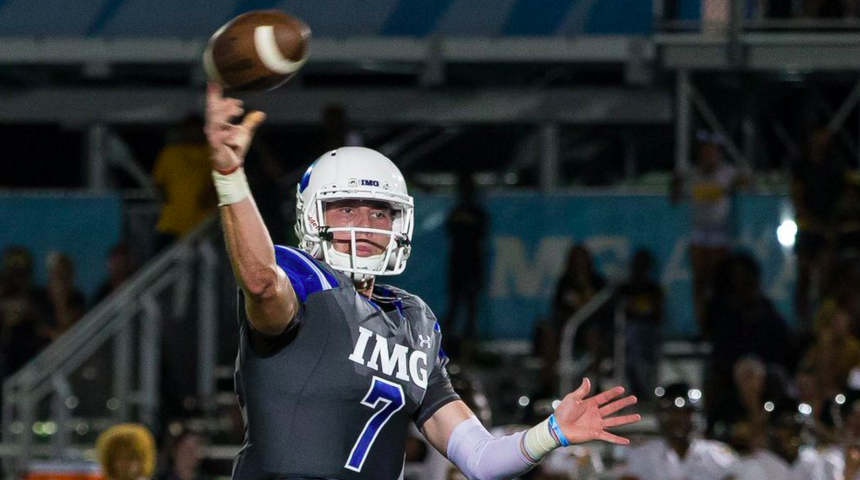
How SEC bounced back with banner year for signing Top 10 QBs
By Chris Wright
Published:
Some quarterbacks flee the pocket. The SEC just endured a three-year stretch where the best fled for other conferences.
And what better place to look for reasons to explain what happened in 2014 and 2015 — and to look for signs that change is near — than recruiting.
Not long ago, 2012 to be exact, the best quarterback in the country, Alabama’s Jameis Winston, didn’t choose the Tide or Auburn. He chose Florida State. The best the SEC could attract was Matt Davis, the No. 121-ranked prospect in the country.
Winston won a national title. Davis signed with Texas A&M, stayed one season and transferred.
RELATED: Best, worst 5-star QBs in college football past decade
Thank goodness for Chad Kelly, the 176th-ranked player, who signed with Clemson but later transferred to Ole Miss.
The following year wasn’t substantially better. After signing just one of the top 10 QBs available, the SEC brought in only two of the top 10 in 2013.
Ohio State pulled J.T. Barrett out of Texas. Barrett helped the Buckeyes win the 2014 national championship. The SEC’s two best signees — Cooper Bateman and Brice Ramsey — still are trying to establish themselves as SEC starters.
The recruiting experts undervalued Tennessee’s Joshua Dobbs, obviously, ranking him No. 164 overall and No. 13th among quarterbacks, but the point remains.
Partially because of coaching unrest and run-first schemes, the SEC wasn’t an elite QB destination — and it showed the past two seasons as interceptions and incompletions became an all too familiar Saturday routine.
“SEC offensive schemes and defenses created the black hole,” recruiting analyst Corey Long said. “This isn’t a conference that a top quarterback should necessarily want to go to in order to showcase his skills.
“Why would a top quarterback want to subject themselves to that when they could go to Baylor or Oklahoma and throw the ball around the yard or go to Clemson or FSU and enjoy a significant talent advantage over 95 percent of their opponents or play on the west coast around much more offensive-minded coaches?
“The rebound comes from some coaching changes. Adding Lane Kiffin as an offensive coordinator makes Alabama a more appealing place for a quarterback. Jim McElwain at Florida is going to get good quarterbacks because he has that reputation. Ole Miss will get good quarterbacks because their offense is a little more unpredictable and fun, but even the Rebels had to upgrade from Bo Wallace to Chad Kelly to Shea Patterson.”
Ole Miss Hugh Freeze told ESPN.com that he thinks most schools have “their guy” now but that quarterback play is “not what it has been in years past.”
“I don’t think that means it’s bad, necessarily,” he said. “I think every school has got their guy and they’re doing the best they can to manage what those coaches ask them to do. Probably, from top to bottom, when you look at their stats, and you look at how all of them have played through the course of the season, there’s probably some merit to (quarterback play regressing).”
This regression will not stand, man.
The first step toward progress is bringing in better recruits. Fortunately, that is exactly what’s happening.
It began in 2014, when the SEC signed six of the top 10 QBs available. That class looked better on Signing Day than it does now, as the top two — Kyle Allen and Will Grier — transferred, as did Jacob Park.
But it was progress.
In 2015, the league landed two of the top three quarterbacks available: Blake Barnett and Kyler Murray.
Last week the top two quarterbacks available and three of the top five signed with SEC schools.
The next step is for those five-stars to become SEC stars, for Barnett, Shea Patterson, Jacob Eason and Co., to join Kelly and Dobbs as the most recognizable names in the conference.
Managing Editor
A 30-time APSE award-winning editor with previous stints at the Miami Herald, The Indianapolis Star and News & Observer, Executive Editor Chris Wright oversees editorial operations for Saturday Down South.







